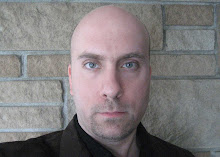A definition of Art requires a definition of Beauty. What is Beauty? There are many aesthetic theories, many attempts to define Beauty, as many it seems as there are people who consider the subject. Everyone has felt a sense of beauty at times, a sense of beauty derived from a book or a movie or a song. People typically don’t distinguish between pleasure and a sense of beauty. They regard the sense of beauty as a higher degree of pleasure. Whether pleasure or a sense of beauty, people generally identify it with the object or event from which it was derived, and in doing so regard the object or event as Beauty itself or as definitive evidence of Beauty. And as others differ in their regard for those objects or events, differences of opinions about Beauty abound. Beauty is soon relegated to an opinion of an object, and the sense of beauty itself is forgotten.
Monday, March 2, 2009
Subscribe to:
Post Comments (Atom)

1 comment:
Here are a couple paragraphs I wrote elsewhere on this subject.
Art is the expression and appreciation of Beauty. Beauty is a perfectly proportioned totality. Beauty is the experience of totality. That experience occurs in us spiritually, in the soul. The soul is a totality. Beauty is a spiritual experience. In the absence of a soul there is no experience of Beauty, only pleasure (and pain). People generally confuse pleasure with Beauty. Pleasure is an experience of partiality, not totality. The experience of pleasure occurs in us either physically or psychologically. Pleasure is not a spiritual experience.
Beauty can be expressed or communicated only after it is experienced. Therefore a great work of art does not embody the experience of Beauty but only the memory of it. In other words, a great work of art communicates the loss of Beauty. Poor works of art are disappointing on account of their imperfect conception or the incompetence of their execution, whereas great works of art are disappointing by nature, at least to the artist in retrospect.
Post a Comment